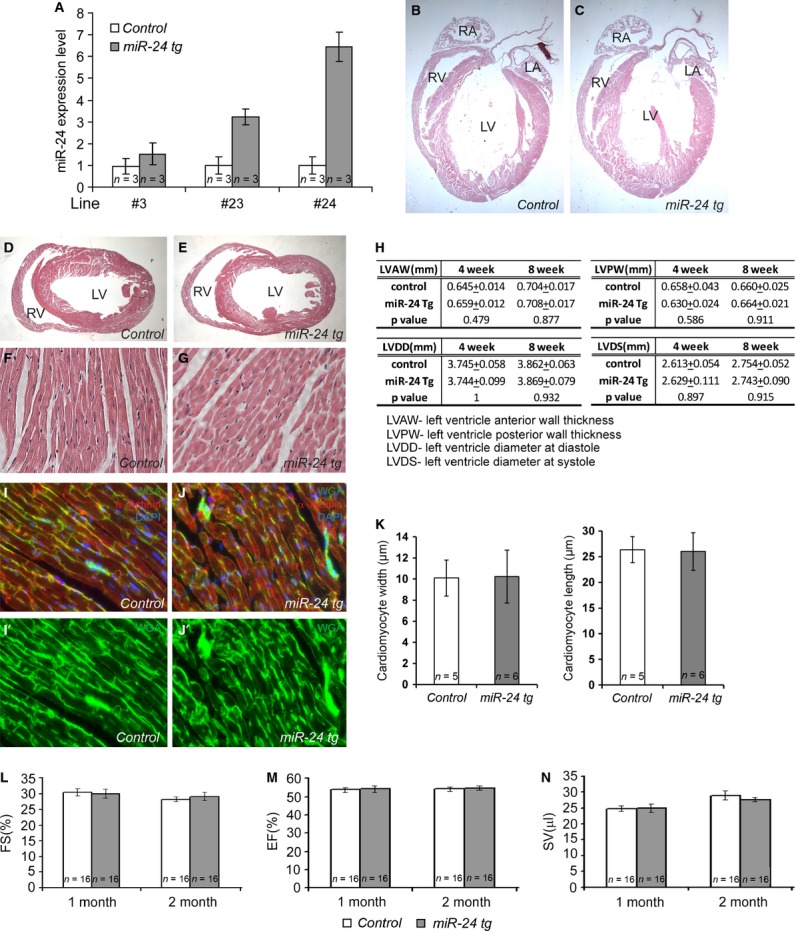Fig. 1.

Myh6-miR-24 transgenic mice exhibit elevated miR-24 expression, with no morphological or functional alteration under normal physiological conditions. (A) Histogram showing miR-24 overexpression in three independent transgenic (tg) lines. Line #24 with sixfold overexpression was chosen for extensive studies. n = 3 for each genotype. (B–E) Four-chamber and transverse sections with haematoxylin and eosin staining on control and miR-24 hearts, both showing normal morphologies. (F and G) High magnification of sections from control (n = 5) and miR-24 tg (n = 6) hearts, both showing normal cell morphology. (H) Table showing normal heart shape in both control (n = 16) and miR-24 tg (n = 16) mice. (I–J') Immunohistochemistry with WGA (green), α-Actinin (red) and DAPI counterstain (blue) on control and miR-24 tg heart sections. (K) Quantification of cardiomyocyte width and length of control (n = 5) and miR-24 tg (n = 6) heart, showing no significant difference. (L–N) Histograms showing normal cardiac function in both control (n = 16) and miR-24 tg (n = 16) mice. FS, fractional shortening; EF, ejection fraction; SV, stroke volume.
